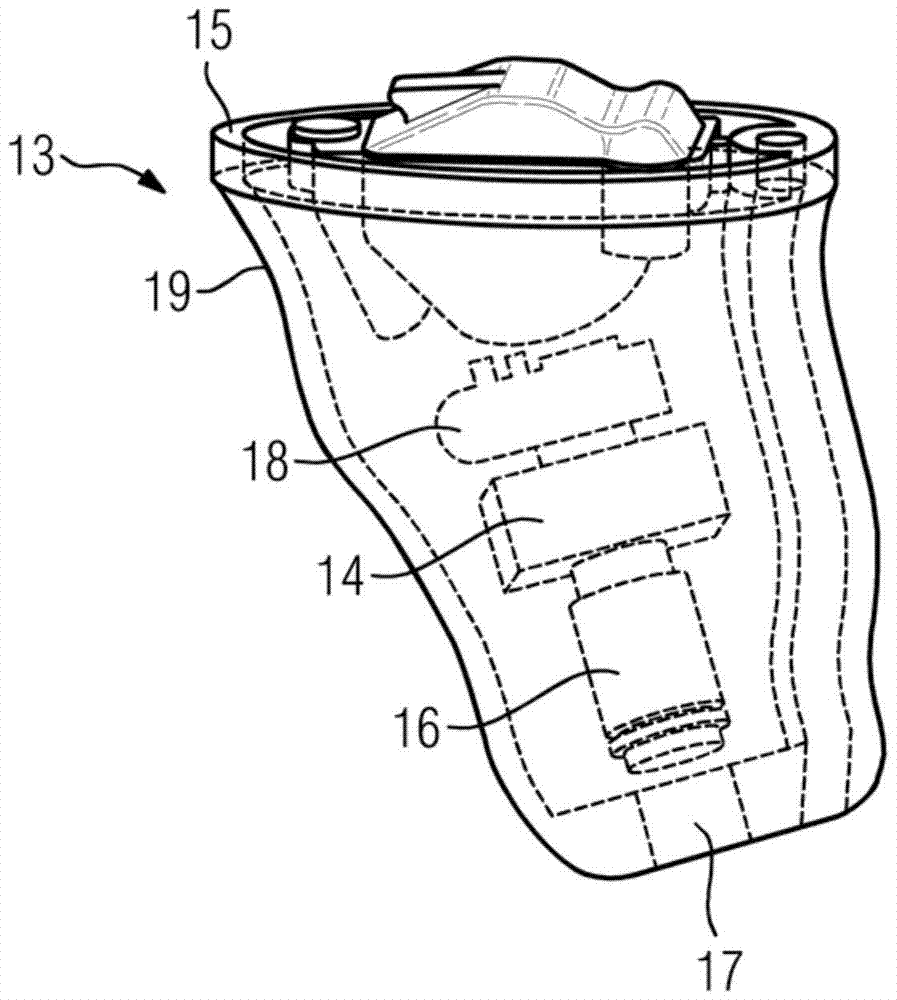Antenna devices for hearing aids
A technology for antenna equipment and hearing aid equipment, which is applied in directions such as antennas, hearing aids, and antenna coupling to achieve the effects of high receiving sensitivity, simplified installation or manufacturing, and high emission magnetic field strength.
- Summary
- Abstract
- Description
- Claims
- Application Information
AI Technical Summary
Problems solved by technology
Method used
Image
Examples
Embodiment Construction
[0046] exist figure 1 The IDO hearing aid device in the prior art is schematically shown in . The IDO hearing aid device 3 is inserted into the external ear canal of the hearing aid wearer. It lies partly in the cartilaginous part 1 outside the ear canal and partly slides into the bony part 2 of the ear canal. Therefore, it is a deep ear canal hearing aid device.
[0047] In the hearing aid device 3 , the receiver 4 is arranged at the end oriented towards the eardrum. The receiver emits an acoustic signal via the acoustic channel 7 towards the eardrum. A hybrid circuit carrier 8 is provided on the panel arranged on the opposite end, which includes a signal processing device (not shown) and an amplifier for generating the control signals of the receiver 4 . The antenna 6 is likewise arranged on the panel 5 and is thus oriented in such a way that it is oriented in the direction of the opposite ear (not shown) of the wearer of the hearing aid device. The antenna 6 is used fo...
PUM
 Login to View More
Login to View More Abstract
Description
Claims
Application Information
 Login to View More
Login to View More - R&D
- Intellectual Property
- Life Sciences
- Materials
- Tech Scout
- Unparalleled Data Quality
- Higher Quality Content
- 60% Fewer Hallucinations
Browse by: Latest US Patents, China's latest patents, Technical Efficacy Thesaurus, Application Domain, Technology Topic, Popular Technical Reports.
© 2025 PatSnap. All rights reserved.Legal|Privacy policy|Modern Slavery Act Transparency Statement|Sitemap|About US| Contact US: help@patsnap.com



